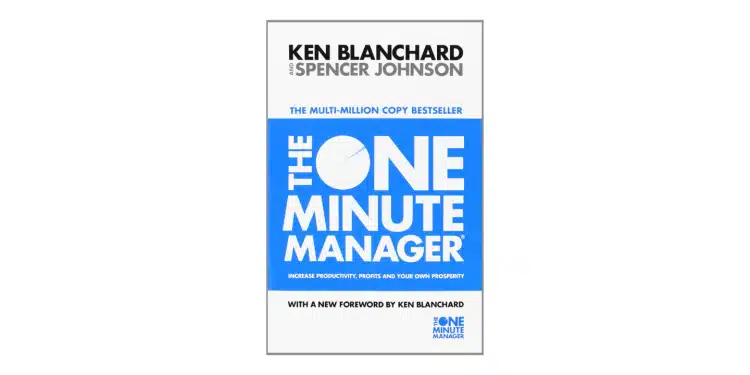The One Minute Manager By Ken Blanchard
Are you new to management? Are you looking for a simple and easy-to-understand guide to help you navigate the challenges of managing people? Look no further than The One Minute Manager.
Told through a parable, this book introduces the best practices in people management in a way that is both engaging and informative. It follows the story of a young man who seeks out a manager who can balance both achieving results and managing people effectively. The book breaks down this balancing act into three simple rules: one-minute goal setting, one-minute praising, and one-minute reprimands.
- The 1st rule, one-minute goal setting, involves having weekly meetings with your team to set goals and hold each other accountable. It’s about outlining what good performance looks like, writing out each goal on a single sheet of paper, and constantly re-reading them. This rule provides clarity and direction, ensuring that everyone knows what is expected of them.
- The 2nd rule, one-minute praising, involves identifying ways in which people on your team are successful and giving precise praise for their achievements. This rule helps build morale and motivate people to continue performing at their best.
- The 3rd rule, one-minute reprimands, involves giving instant feedback when someone does something incorrectly. This rule ensures that issues are addressed quickly and effectively, allowing people to learn from their mistakes and improve.
At under 100 pages, The One Minute Manager is an easy read that can be done in one sitting. But don’t let its brevity fool you; it contains useful insights that even experienced managers will find relevant. The book provides a clear and concise approach to people management that can be applied in any workplace.
In addition to these three rules, the book also provides insights on hiring. It reminds us that there are only three ways to hire: recruit winners, hire someone with the potential to be a winner and train them, or pray and hope for the best. As a manager, it’s up to you to decide which approach to take.
In conclusion, if you’re a new manager or simply looking to improve your management skills, The One Minute Manager is a must-read. Its simple and effective approach to people management will provide you with the clarity and direction you need to succeed.



Get involved!
Comments